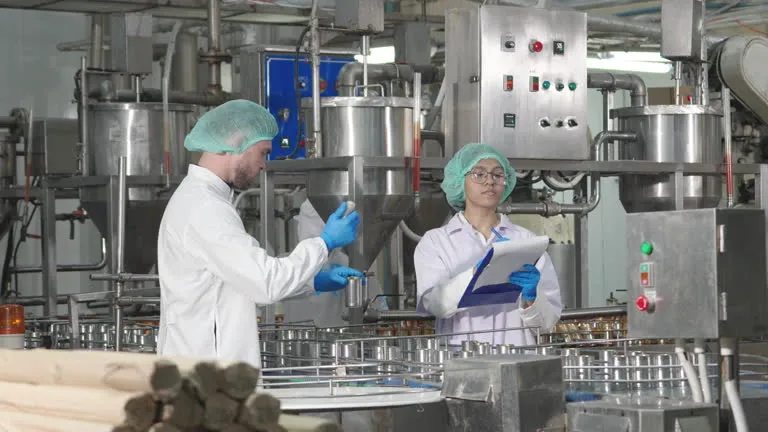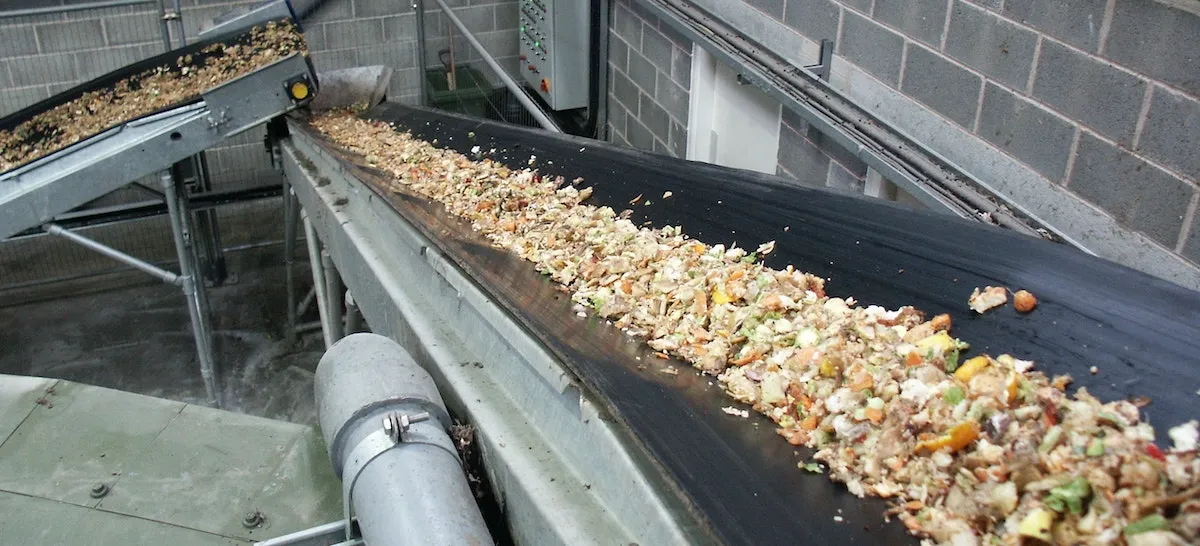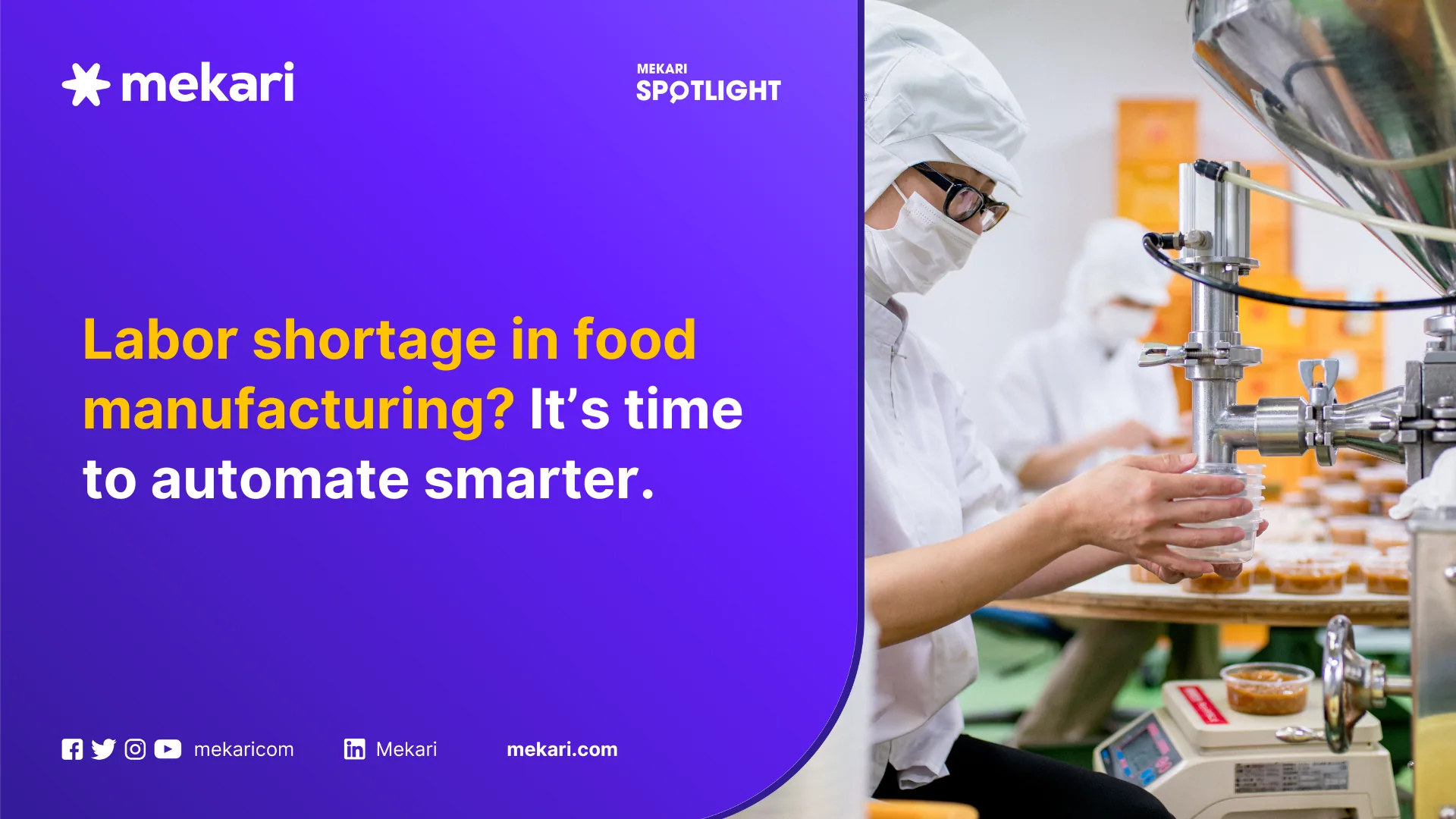Mekari Insight
- Staff shortages in food manufacturing are causing widespread productivity loss, quality risks, and rising labor costs.
- From predictive maintenance to digitized quality control and smart labor scheduling, automation reduces manual bottlenecks and keeps production moving.
- Mekari offers an end-to-end SaaS solution tailored for the F&B industry. With integrated tools for HR, finance, CRM omnichannel, expense management, and low-code custom apps, Mekari helps businesses stay efficient, scalable, and resilient.
The food and beverage (F&B) industry has long struggled with workforce issues, particularly high employee turnover. In 2025, quick service restaurants in the U.S. report employee turnover exceeding 130% annually.
This means that for every role filled, another is left vacant within the same year, creating a constant cycle of hiring and training. Combined with labor shortages, rising demand, and supply chain pressures, staff shortages have become a critical challenge for food manufacturers worldwide.
Read on to learn how these shortages are impacting the industry; and how automation can provide a sustainable solution.
Effects of staff shortages in food manufacturing industry
When staffing falls short, the impact is felt at every stage of food and beverage operations, from factory floor to end consumer. Here’s how staff shortages in food manufacturing are shaping the industry today:
1. Reduced productivity
When there aren’t enough hands on the production line, things naturally slow down.
- A 2024 report by Impact Staffing revealed that 36% of food manufacturing companies are operating below capacity due to workforce shortages.
- Some manufacturers report productivity losses of up to 40%, as managers scramble to reassign tasks, cover shifts, and deal with disruptions.
- As of early 2024, the U.S. food manufacturing industry had over 622,000 open jobs, showing just how widespread the issue is.
2. Quality concerns
Overworked teams can’t always maintain the same attention to detail, especially in a field where safety and consistency are non-negotiable.
- Errors in packaging, labeling, or inspections become more common when staff are stretched too thin.
- Hiring gaps often include critical roles like food safety inspectors and QA personnel, increasing the risk of recalls or compliance violations.
- The long-term risk? Damaged brand reputation and loss of customer trust.
3. Increased costs
Labor shortages aren’t just an operational issue, they’re expensive.
- Companies are spending more on overtime just to keep up with basic output.
- Many manufacturers are also offering higher wages, bonuses, and better benefits to attract talent.
- According to Impact Staffing, nearly half of companies say recruiting qualified workers is their top challenge, while 24% cite rising labor costs as a major concern.
4. Strained customer experience
Whether it’s a food manufacturer or a fast-food chain, staffing issues trickle down to the people who matter most, your customers.
- In restaurants, 70% of operators say roles are hard to fill, and 45% admit they can’t meet demand with current staff levels.
- This leads to longer wait times, limited menu items, or even early closings.
- For food manufacturers supplying these businesses, any delay or inconsistency can disrupt the entire customer experience downstream.
Read more: Indonesia Manufacturing: Key Insights for Business ExpansionSolutions to the staff shortages in food manufacturing
In the face of persistent staff shortages in food manufacturing, automation offers a scalable and efficient path forward.
By digitizing workflows, reducing dependency on manual processes, and equipping teams with smart tools, food and beverage businesses can maintain high performance, even with leaner teams. Below are key areas where automation makes a meaningful impact.
1. Streamlined operations
Automating order-to-production workflows, line changeovers, and digital checklists helps eliminate manual handoffs and reduce rework. This not only boosts efficiency but also enables more agile responses to demand changes.
Using low code / no code platforms, businesses can quickly build and deploy these workflows without heavy IT support, allowing plant teams to digitize daily operations and respond faster to staffing fluctuations.
2. Labor planning and scheduling
Effective labor management is key in navigating high turnover. Ensuring the right people are in the right roles at the right time has never been more critical.
Automation supports skills-based scheduling and integrates digital onboarding, helping new hires become productive faster. An HR system that aligns staffing plans with shift requirements and offers guided SOPs empowers lean teams to operate smoothly, even with limited supervision.
3. Consistency and accuracy
Automation brings standardization, ensuring that procedures like batching, labeling, and compliance checks are carried out correctly every time. Digital SOPs, in-line quality checks, and real-time data capture reduce human error, while barcode-based tracking improves recall readiness and traceability.
Leveraging custom-built forms and checklists via low code tools, manufacturers can ensure that processes remain consistent regardless of who’s on shift.
4. Quality and food safety automation

With fewer staff, maintaining rigorous quality control can be a challenge. Automation closes this gap by using AI tools such as computer vision for visual inspections, SPC alerts for trend detection, and eHACCP systems for digital safety logging.
These systems detect deviations in real time and create fully auditable trails, making compliance easier and reducing the risk of costly recalls or reputation damage.
5. Predictive maintenance and uptime
Unexpected equipment failures can halt production, and when teams are short-handed, downtime lasts longer. Automation powered by sensor data and AI predicts equipment failures before they happen, automatically generating maintenance work orders.
This reduces dependency on manual monitoring and ensures higher OEE (Overall Equipment Effectiveness), even with fewer technicians on-site.
6. Inventory and waste reduction

Automation enables better control over inventory levels, expiration tracking, and lot rotation, cutting down on write-offs, spoilage, and out-of-stocks.
With an omnichannel CRM system, businesses can unify demand signals from online stores, marketplaces, and retail partners. This insight helps align production and inventory decisions more accurately, especially important when teams are stretched thin.
7. Scalability without linear headcount growth
Scaling operations doesn’t have to mean hiring at the same rate. Cloud-based systems and robotic workflows let manufacturers expand output while keeping staff levels steady.
Using low code / no code platforms, teams can replicate workflows, templates, or digital tools across new lines or locations quickly, supporting growth even amid labor limitations.
8. Employee empowerment and retention
When automation takes care of repetitive tasks, employees can focus on problem-solving, quality improvement, and innovation. This shift not only boosts productivity but also increases job satisfaction and reduces burnout.
Modern HR platforms that support skill development and career pathways help companies retain top talent, especially important in a competitive labor market.
9. Supply chain and procurement automation
With rising input costs and supply chain volatility, automation provides much-needed control. Systems can forecast needs, generate purchase orders, and monitor vendor performance, all without manual input.
A robust finance system enables faster procurement cycles and cost tracking, helping businesses maintain supply stability even with fewer procurement staff.
10. Faster compliance and traceability
Meeting audit and regulatory requirements is time-consuming, unless compliance is built into the process. Automation enables the creation of digital batch records, allergen control checks, and barcode-based traceability that compress audit preparation from days to minutes.
Paired with mobile tools and custom plant apps, these solutions keep production lines moving smoothly even when specialists are unavailable.
Read more: Custom Manufacturing Software: Everything You Need to KnowBuilding a resilient future for food and beverage operations
The challenges brought on by staff shortages in food manufacturing are not going away any time soon. From reduced productivity and rising labor costs to increased quality risks and supply chain pressures, it’s clear that traditional ways of operating are no longer enough.
By embracing SaaS-based solutions, food and beverage companies can streamline processes, reduce manual bottlenecks, and empower their teams to focus on what matters most.
Whether it’s optimizing labor scheduling, maintaining compliance, or digitizing core workflows, automation helps businesses do more with less—without compromising on quality or customer satisfaction.
If you’re ready to future-proof your operations and gain an edge in a competitive market, explore how Mekari’s end-to-end solution for the F&B industry can help.
With integrated tools for HR, finance, CRM omnichannel, expense management, and custom software development through low code/no code, Mekari empowers F&B businesses to stay agile, efficient, and ready for whatever comes next.

